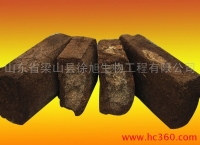 高温细菌 高温细菌 高温细菌 高温细菌
Thermophilic microorganisms is a kind of living microorganisms in a hot environment, fire Yamaguchi and surrounding area, spa, hot plant wastewater discharge areas. The past 30 years, this type of micro-organisms is becoming more widely scientists attracted attention and interest. Especially in water temperatures above the boiling point and boiling point under the conditions of the bacteria can live to be discovered, but also promote the study of thermophilic microorganisms.
According to the different requirements of temperature, thermophilic bacteria can be divided into three categories:
(1) facultative thermophilic bacteria: maximum growth temperature between 40 ~ 50 ℃, but the optimum growth temperature is still in the temperature range, it is also known as heat-resistant bacteria.
(2) specificity of thermophilic bacteria: the optimum growth temperature above 40 ℃, 40 ℃ the following are poor growth or even growth.
(3) extreme thermophilic bacteria: the optimum growth temperature above 65 ℃, the lowest growth temperature above 40 ℃.
With the study of thermophilic bacteria for a wide range of development and new strains continue to be discovered. In these newly discovered species, from Italy, an undersea volcano near the sulfur mine isolated from an extreme thermophilic bacteria pyrodictium, so scientists are most interested in, it is by far the most known thermophilic bacteria . Where the sea-bed mineral deposits from the heat and cover the hole gap is composed of sulfur, the seabed continue to spray the hot water and volcanic gas. Sea-bed temperature 103 ℃. pyrodictium growth temperature range of 85 ~ 110 ℃, the optimum growth temperature of 105 ℃; ph range 5 to 7; to adapt to the salt range from 1.2% to 12%, the optimum salinity of 1.5%; exacting to inorganic nutrition, the use of elemental sulfur to form h2 and a large number of h2s; strictly anaerobic, exposure to oxygen, the few minutes after inactivation. Bacteria in maintaining h2/co2 gas phase, and the supply of sulfur in synthetic seawater to survive, in the training process, adding yeast extract and peptone solution may stimulate their growth.
Ph value of thermophilic bacteria on the requirements, there are two radically different areas, acidophilic thermophilic optimum ph range of 1.5 to 4, while the other group ph range is 5.8 to 8.5. Extreme alkalophilic thermophilic bacteria has not yet been found.
(1) the sensitive role of lipid
As we all know, by the double-layer lipid membrane composition, but the archaeal thermophilic bacteria in its double lipid was covalently cross-linked, as both sides are water-based resin layer (as shown in Figure ①), and maintained complete hydrophobic layer, which results ditch, has greatly enhanced its heat resistance.
(3) the thermal stability of proteins |
|
|